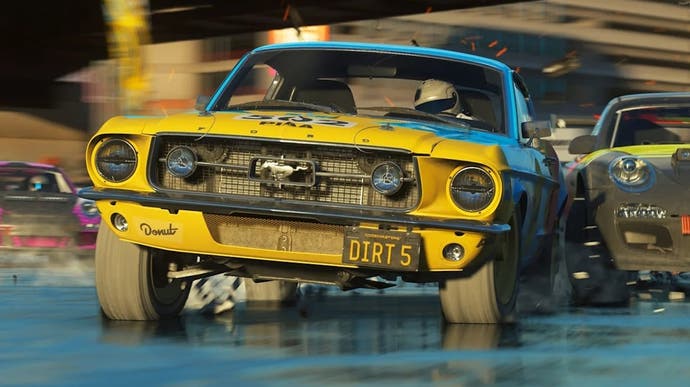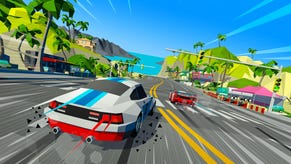Dirt 5 on Xbox Series X - what's the difference between 60fps and 120fps racing?
Our first hands-on with a next-gen console game.
What makes the next-gen difference? Today, the embargo lifts on our first look at an actual Xbox Series X title - Dirt 5, from Codemasters Cheshire. Xbox Series consoles benefit from three plays modes, including the ability to play at 120 frames per second on compatible displays - and first impressions are highly favourable. What we're looking at today isn't a final build and optimisations are ongoing up until release on November 10th, but the developers look set to deliver an involving, fun driving game that gives the user plenty of choice in how the generational leap in CPU and GPU power is deployed.
Dirt 5 builds on a truly remarkable foundation, using an evolved form of the Onrush engine built by Codemasters Cheshire, where many of its staff originally worked on Sony's excellent MotorStorm and DriveClubs franchises. Onrush wasn't the commercial success many might have hoped for, but the technology is first class and it's improved still further in Dirt 5. The result is a highly flexible, fully dynamic engine that ticks off a huge amount of top-tier tech boxes: we have photogrammetry captured materials, mud and snow deformation, dynamic weather, volumetric fog - and a baseline target of 60 frames per second on the next-gen consoles.
Onrush's best technological features are repurposed for an arcade-style rally game, but it goes much further in several respects. Vehicles are larger, and more geometrically complex. Physics are rewritten since Onrush, while track detail is ramped up still further. The engine's far more scalable too, factoring in current-gen machines as usual, but also now Series S, X and PC. It even includes a four-player split-screen mode, something we rarely see in racing games these days.
The first thing that strikes you about Dirt 5 is its terrain. From the gravel of an Italian mountain route to the reflective mud tracks of the China circuit, every location sports a unique look, where materials impact on the game's physics. Most of this is best seen from the bumper cam; protruding rocks, and tyre streaks through snow being particular highlights. Onrush's workflow depended on photogrammetry capture taken from drone footage, to create a starting mesh for the environment - an approach that's likely reprised here. The result in Dirt 5 gives physically accurate materials that react to light in a consistent way. This is crucial; a day-night cycle, and dynamic weather also factor in, often completely transforming a track by the end of a race. Puddles even form across terrain as rainfall sets in properly. Lighting is constantly in flux, then, and the materials have to adapt in a realistic manner - and Dirt 5 nails it.
Effects and physics are also impressive. Procedural dirt and damage play a huge part in adding immersion to a race. Mud splatters, and dust rises behind the tires of your competition. All of the rising debris builds up on car bodies as you go, which deform and crumple on impact. All told it's an impressive spectacle at a starting grid - 12 cars can create absolute havoc on muddy tracks. Much of the physics engine is built in-house - for tyres and suspension - and that's not to mention the impact these vehicles leave on the track themselves. Tyre marks build up on icy circuits, while snow deforms realistically using a geometric model to simulate volume. Again, everything feels far more dynamic than previous Dirt games, and apt to change along with the weather.
All of which brings us to how the game performs, at least in this non-final code. The good news is that the choice is yours for how you want the experience delivered. We're given three playback modes on Series X: one for frame-rate, another for image quality, and finally 120Hz. Final metrics are yet to be nailed down and may well improve when the game ships, but as it stands, the frame-rate mode runs at a dynamic 3840x2160, targeting 60fps. Visually speaking, the game does a very good job sticking at 4K; the car selection, opening attract screens, and action after splintering from the pack - all 4K. The only slight drop resolution-wise is at the starting grid, to 3328x1872 - but impressively, that's it.

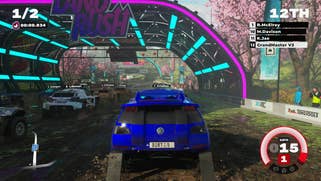







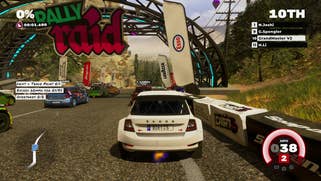

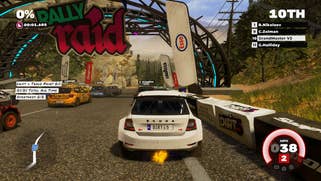






The image quality mode also runs at a dynamic 4K picture with a 60fps target, but the difference is that the focus isn't on improving resolution per se, but rather in-game settings. Amongst the differences we see, there's higher quality shadows, improved texture filtering and an improved level of crowd density around the circuits. There are possibly more tweaks to factor in - geometry LODs for one - but the most obvious upgrade here is the shadow upgrade. In term of resolution, image quality mode hits a native 3840x2160 easily. However, get into a big pack of 12 cars, and again, there's a resolution drop to circa 1800p at lowest. Again, that's the extreme, and may well shift in final code.
The good news is that performance looks good, even in this non-final state. Both image quality and frame-rate modes lock for the most part to 60fps once splintered away from the competition, and when frame-rate does drop, there is some screen tearing. The frame-rate mode is, obviously, more consistent whereas the image quality mode is true to its name. It doesn't prioritise performance to the same degree, so you do see more drops from time to time and the outlook right now is good for both of the standard modes.
Perhaps the most exciting twist for Series X is the 120Hz mode, which only becomes visible if the console front-end has this refresh rate selected. If you're using an HDMI 2.1 display, you can retain your 4K signal output, while existing HDMI 2.0 screens that do support 120Hz require you to drop to 1080p or 1440p, depending on their specification. At this point, it's worth stressing that Xbox Series X will continue to render internally at the same resolution as if you were connected to a 4K screen. The display controller will simply downscale the image before sending it out to your screen - so on my LG B8 OLED, I can select 120Hz mode, I can play Dirt 5 at 120fps, but whatever internal resolution it renders at is downsampled to 1080p - the technical limit of my screen.
As things stand, the 120Hz mode inevitably pulls back settings to free up GPU headroom for the extra temporal resolution. Doubling the frame-rate from 60 is no small feat, demanding one frame every 8.3ms, rather than 16.7ms. All the core physics and game logic translate intact from the regular options, and so it's on the GPU-side stressors we see changes. Spectator counts are dropped further, as is shadow quality. However, the biggest change is that it renders at a dynamic 2560x1440. In other words, it maxes out the older HDMI 2.0 spec in terms of what that bandwidth can show - 1440p120Hz at peak. Drops are possible, down to 1080p lowest at the starting grid, though it adjusts to numbers in-between too.
The benefit of doubling the refresh from 60fps is clear in a racing game. Where every millisecond counts, for every nudge of the analogue stick, having lower latency response to the screen is a big benefit. There's no question that the jump from 30fps to 60fps is more essential, but I suspect 120fps will be seen as the purist's choice. It's the icing on the cake and exciting new ground for consoles. For me, I found the camera pans while cornering highlighted the visual effect best; a kind of seamless glide not possible at 60fps. Perhaps it's not necessary for all games, but shooters and racers clearly reap the rewards in motion.
Performance isn't perfect, but it is pretty close to 120fps. Interestingly there are some drops under this at points, the usual culprit being the starting grid - but they aren't a big deal in practice. I've seen a hit to 90fps, but at such a high refresh it's hard to pick out by eye, especially if you're using variable refresh rate display technology. Once we break the 60fps barrier, the notion of fps as a metric for describing the experience is debatable. Consider this: there's a 30fps gulf between 90fps and 120fps, but the frame-time variance is just 2.8ms - compared to 16.7ms going from 30fps to 60fps, another 30fps leap. The basic takeaway: frame-rate drops beneath 120fps can be far less impactful to the experience, especially when they are fleeting.
All of this only touches the surface of Dirt 5's ambition. As a multi-platform release - on four Xbox machines, three PlayStations, and a multitude of PC configurations, there's a staggering amount to cover. For now, I'm glad to see Series X given three modes to experiment with, all leveraging next-gen power in different ways. What's also a relief is that no matter which mode you use, Dirt 5 is an impressive leap for the series, and one that should see the next-gen consoles launch in style.
